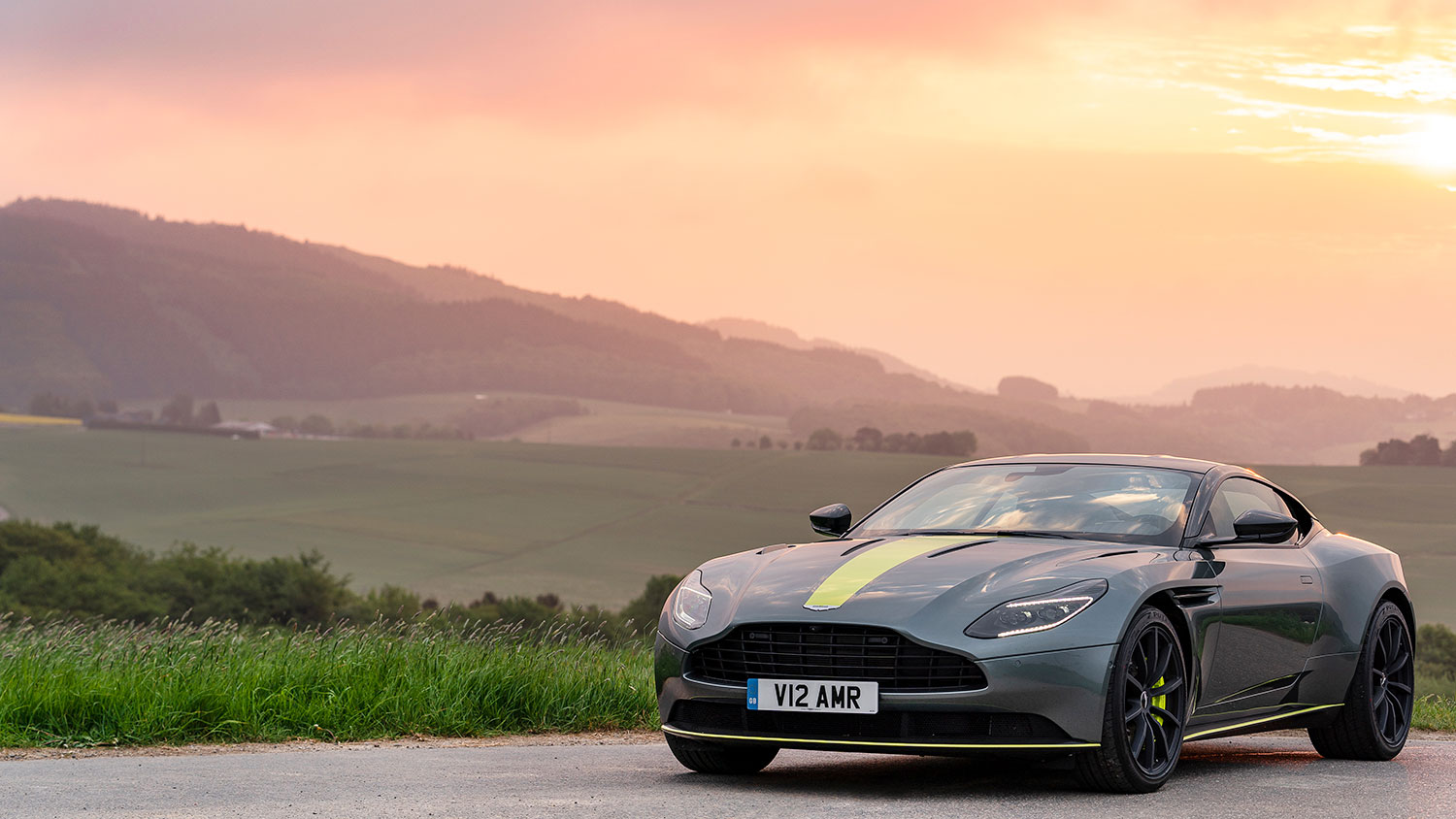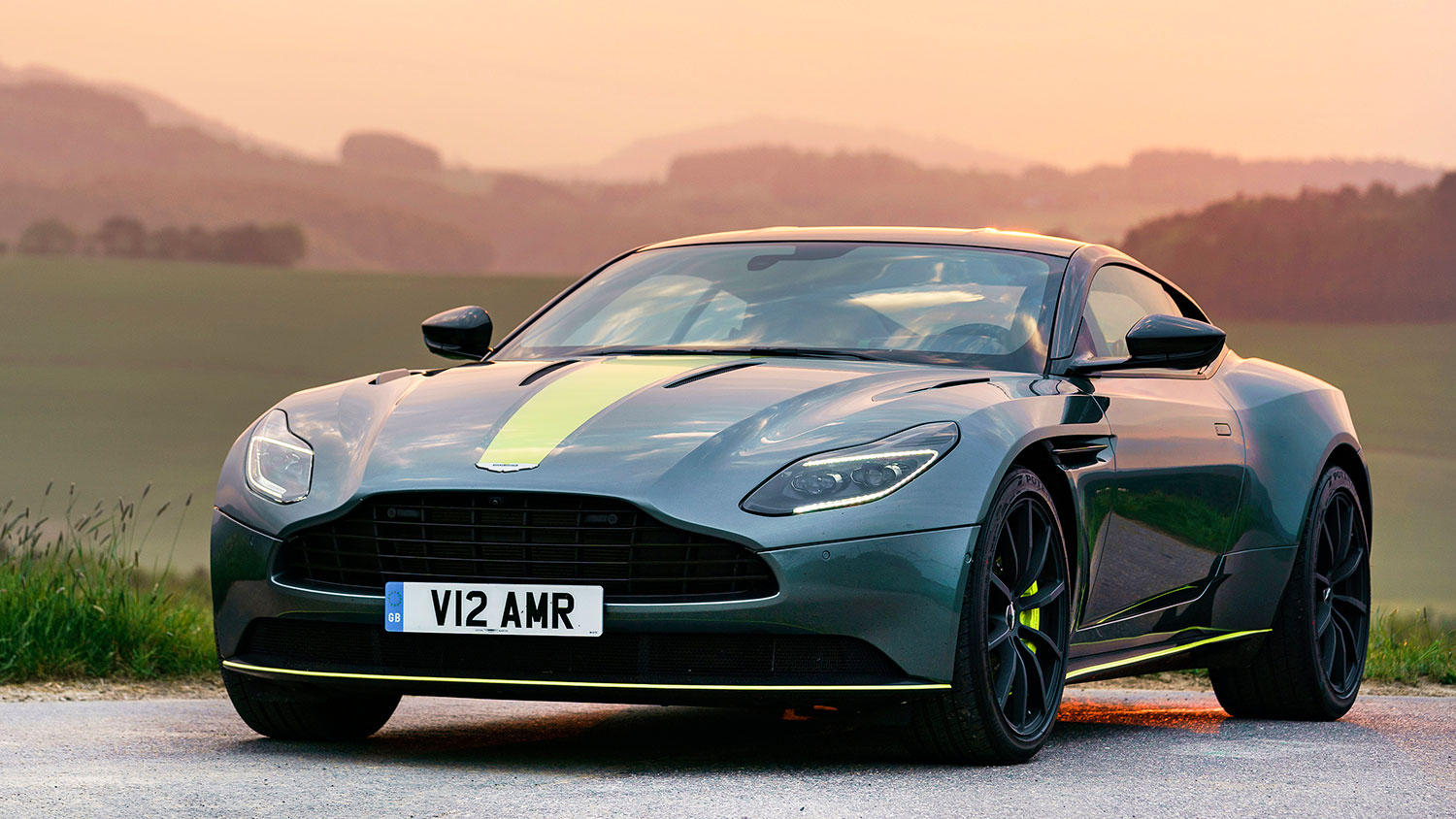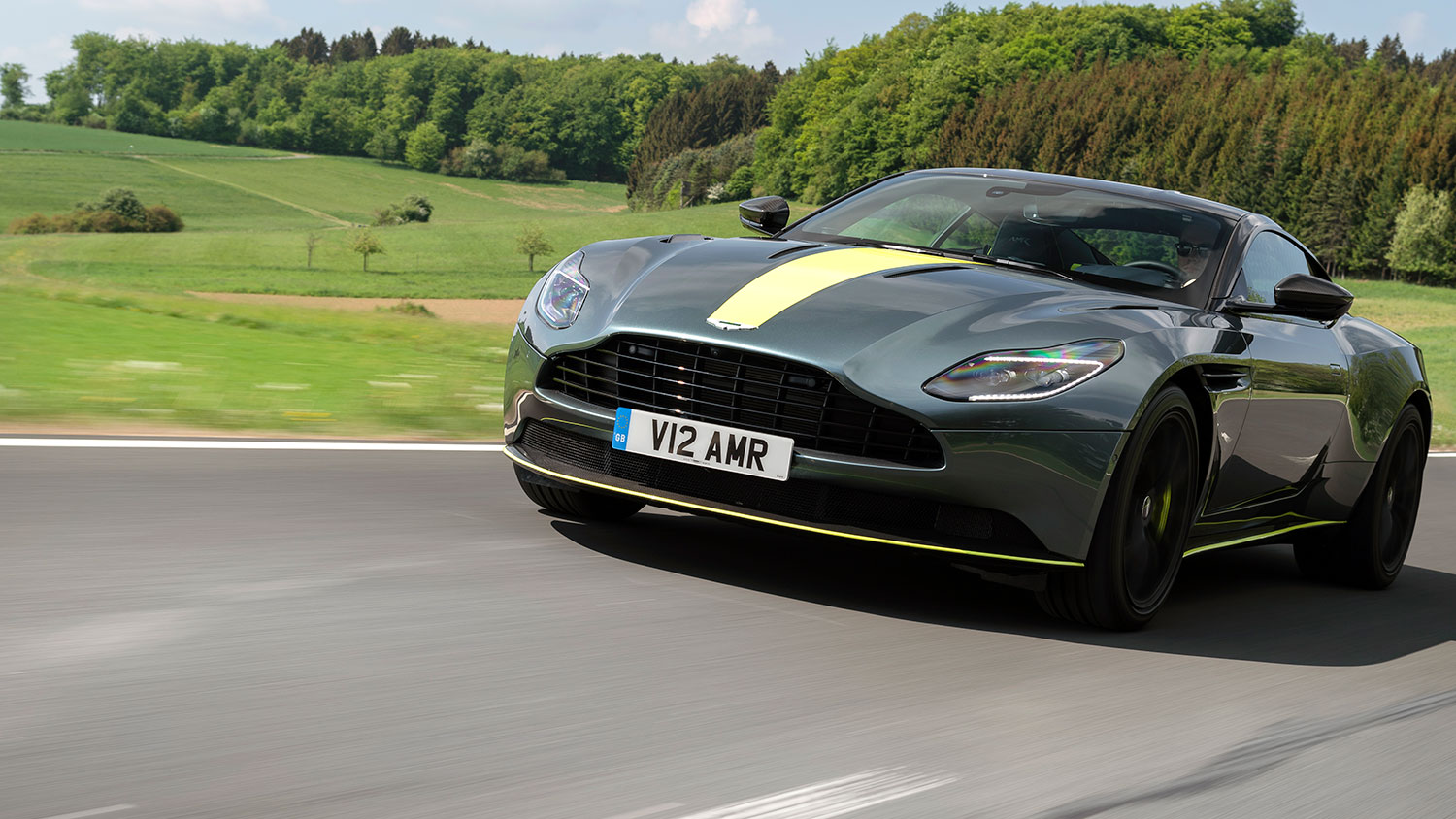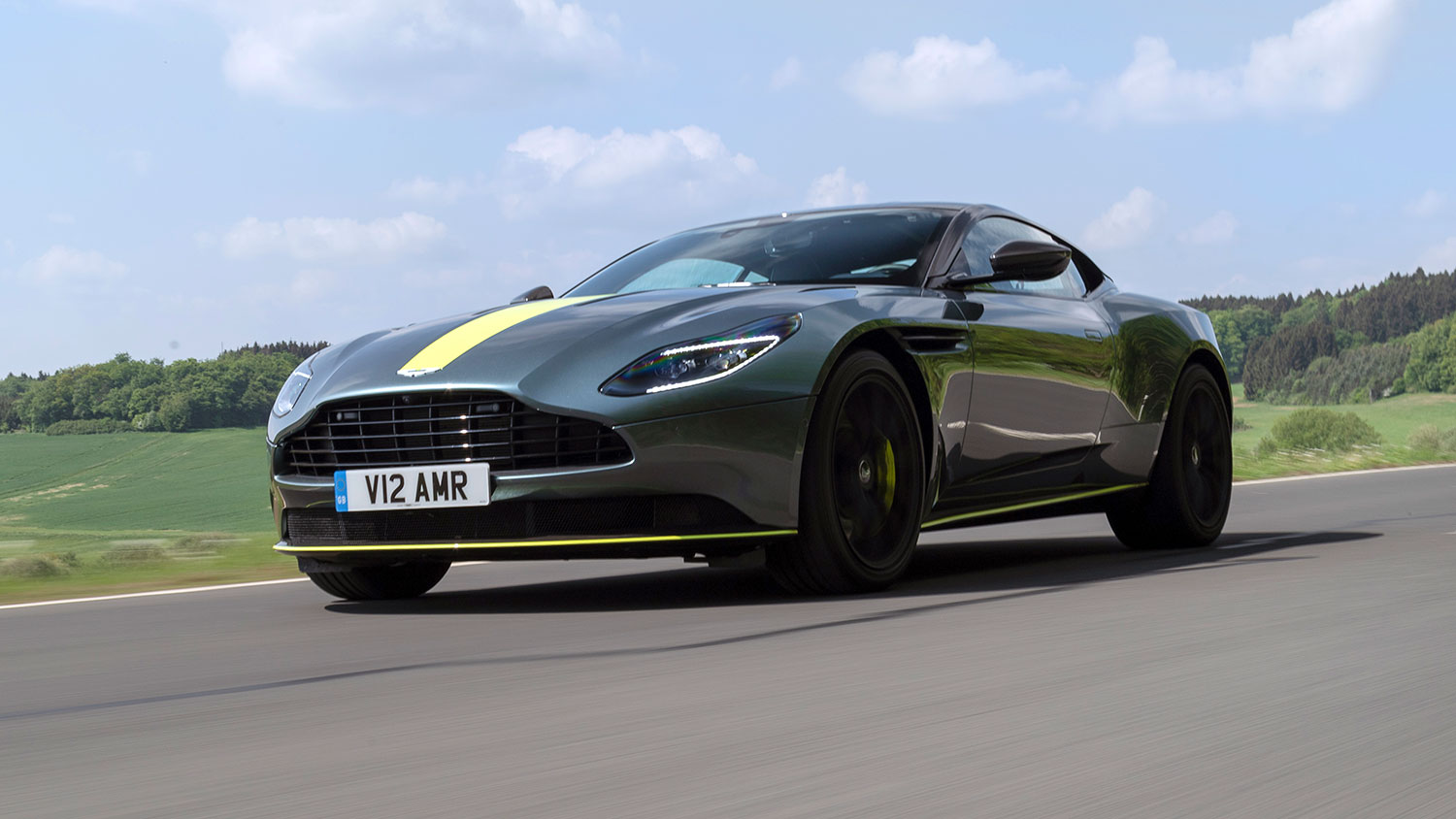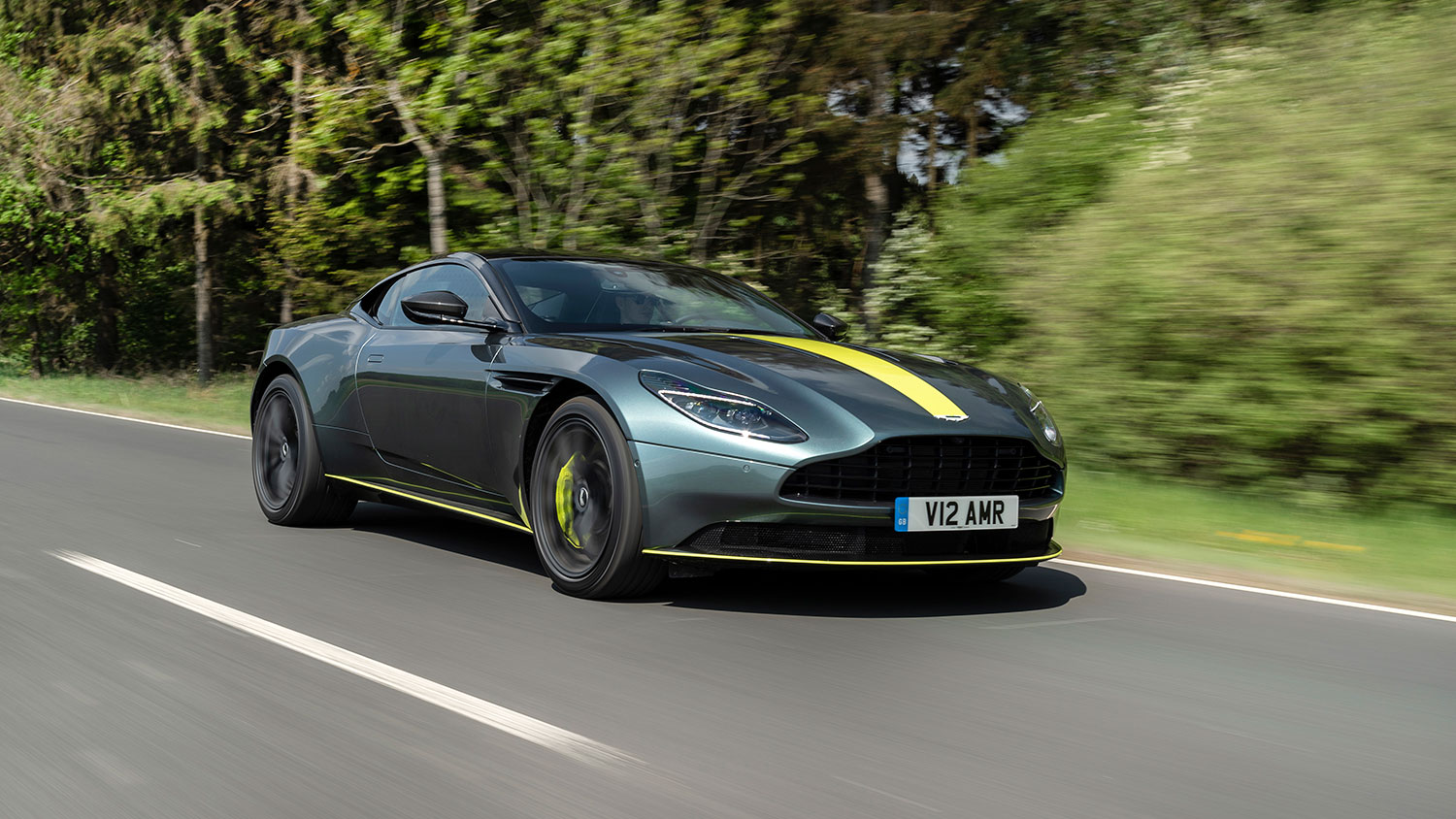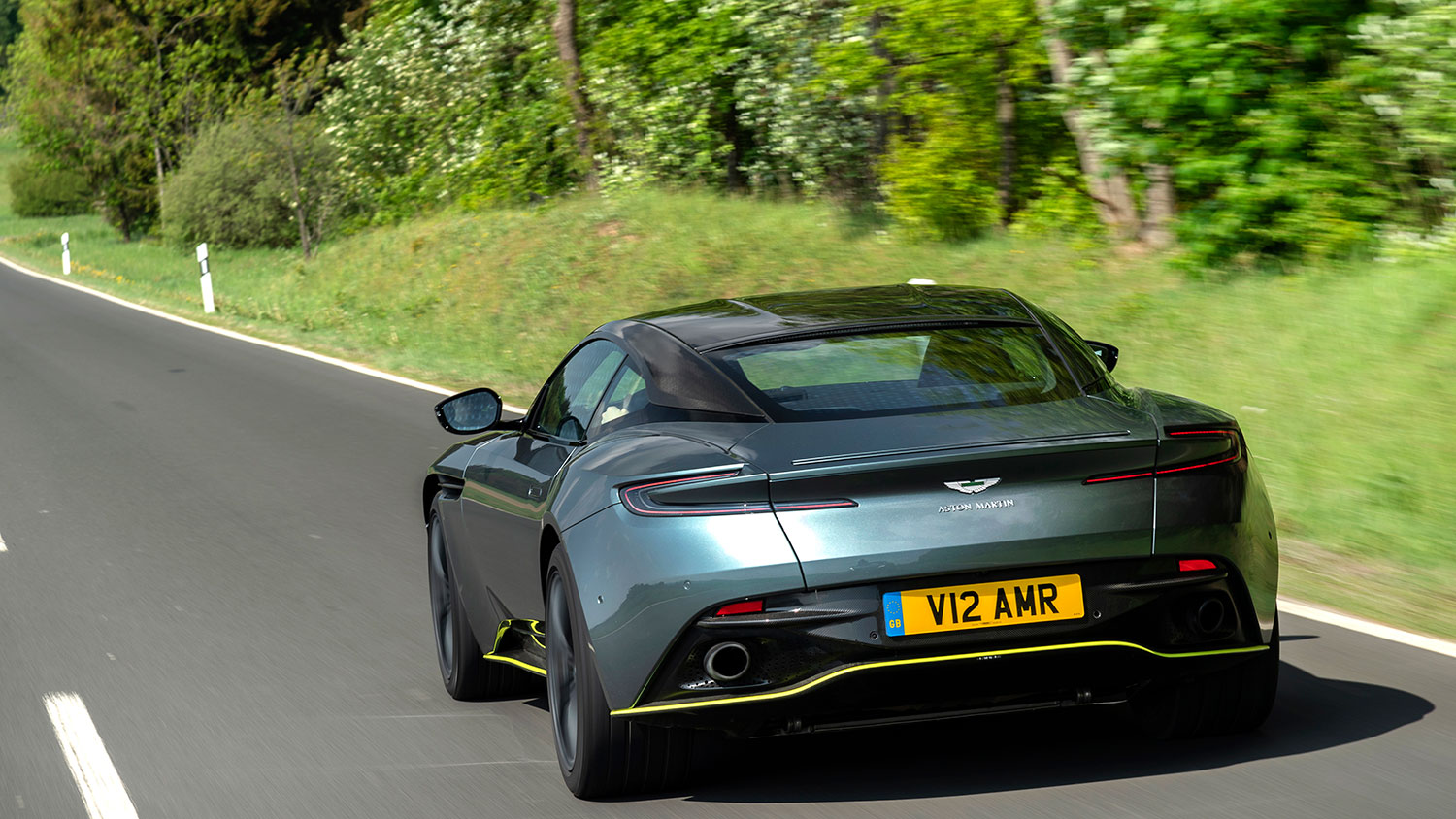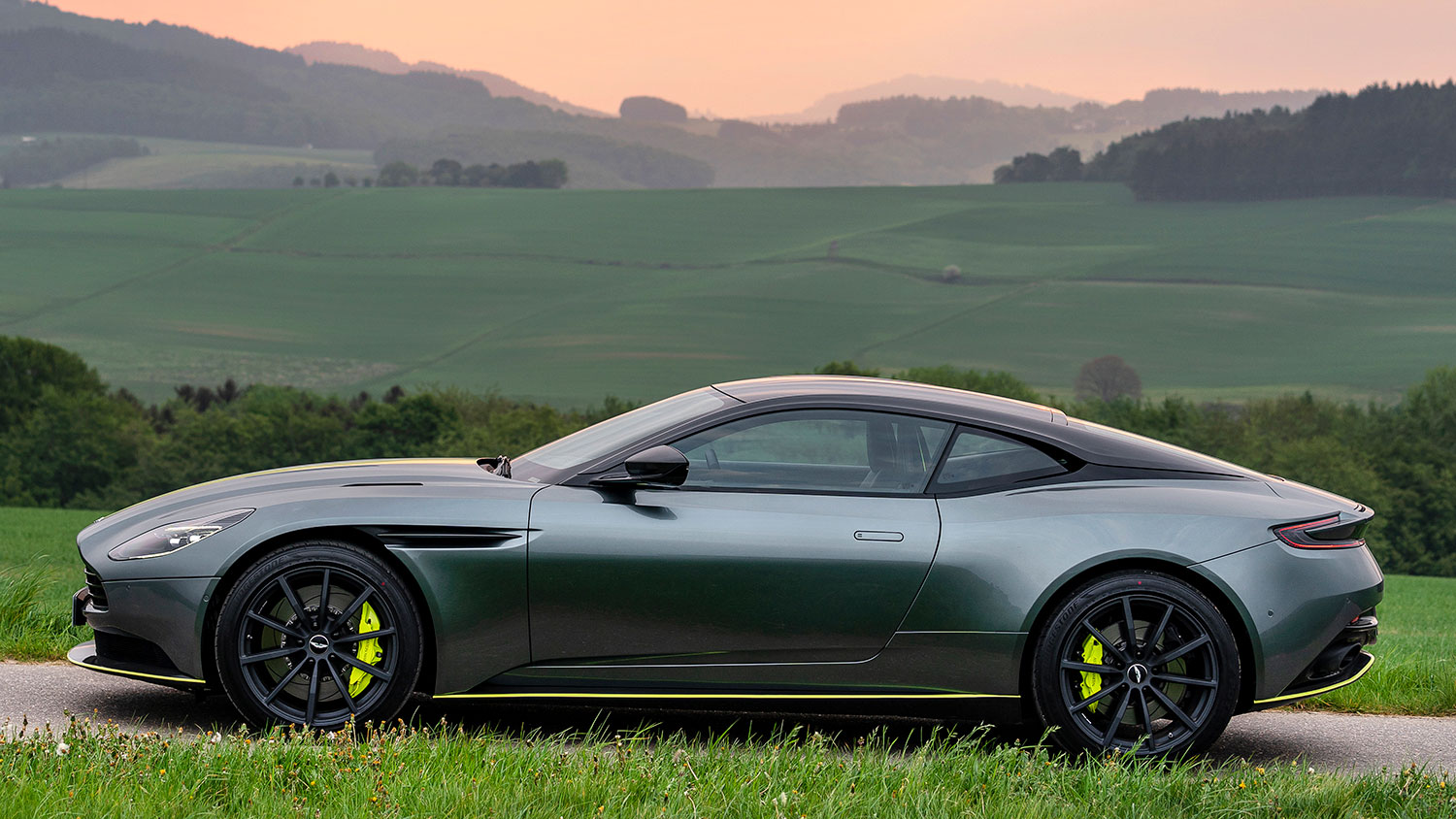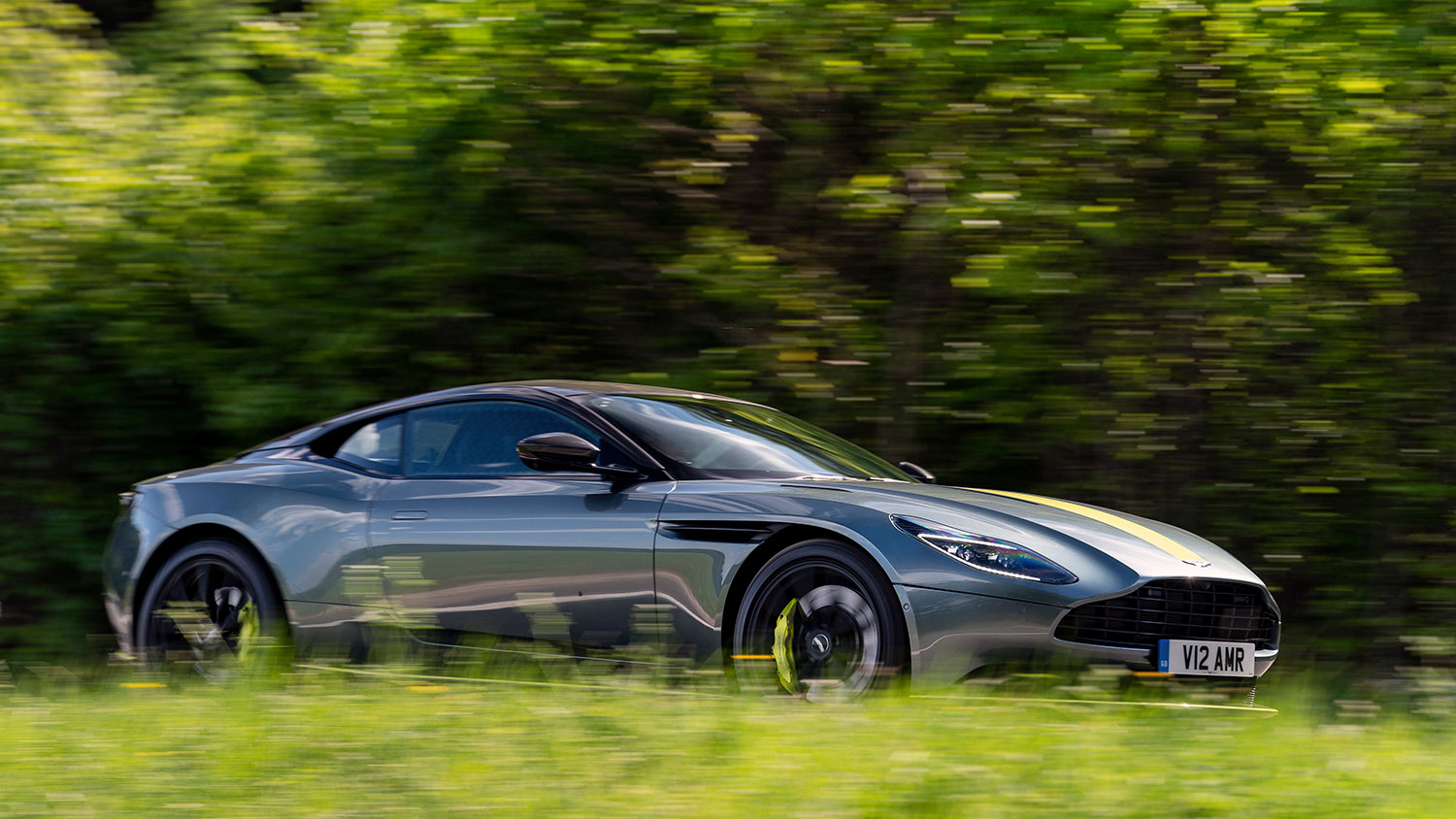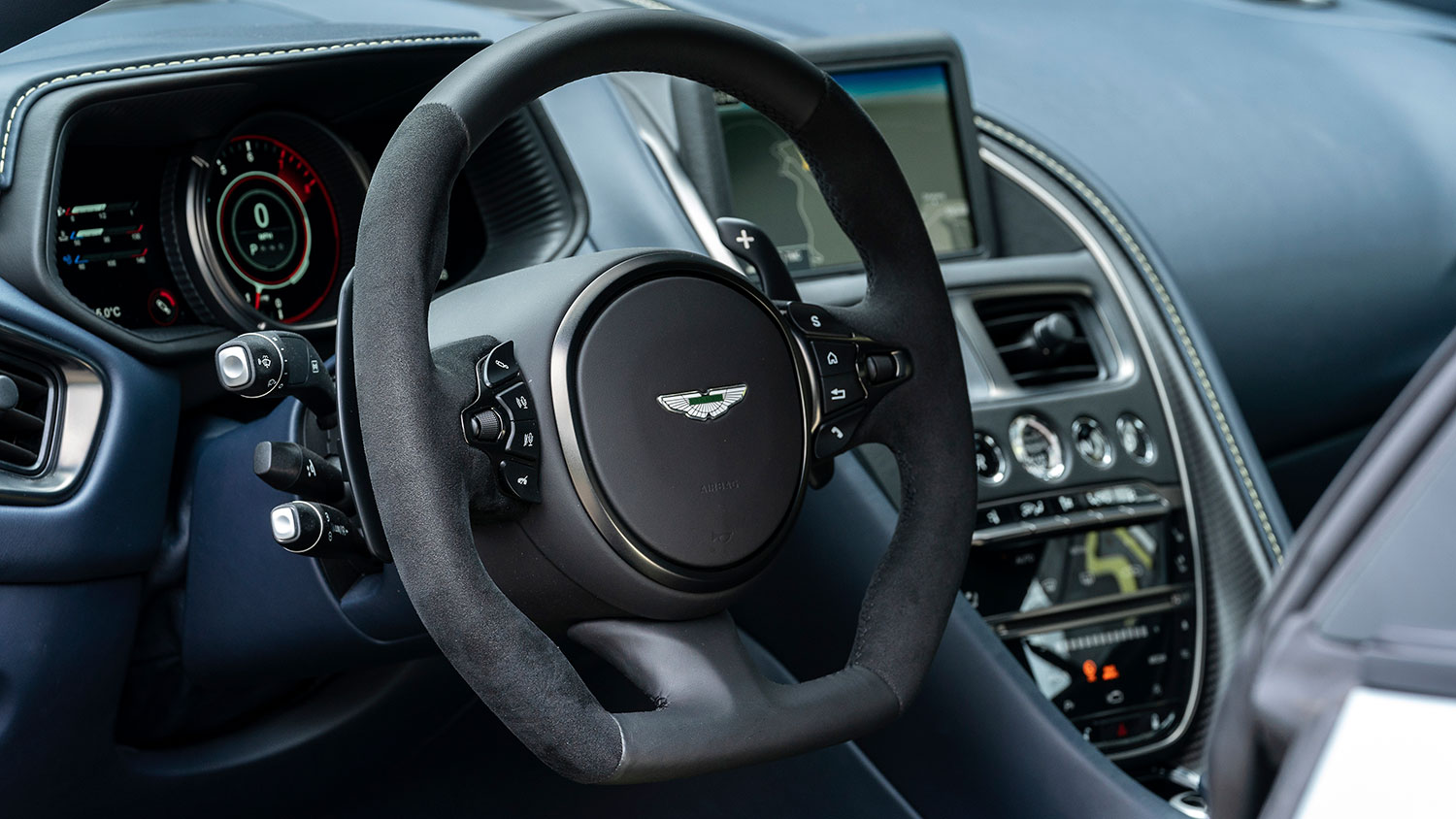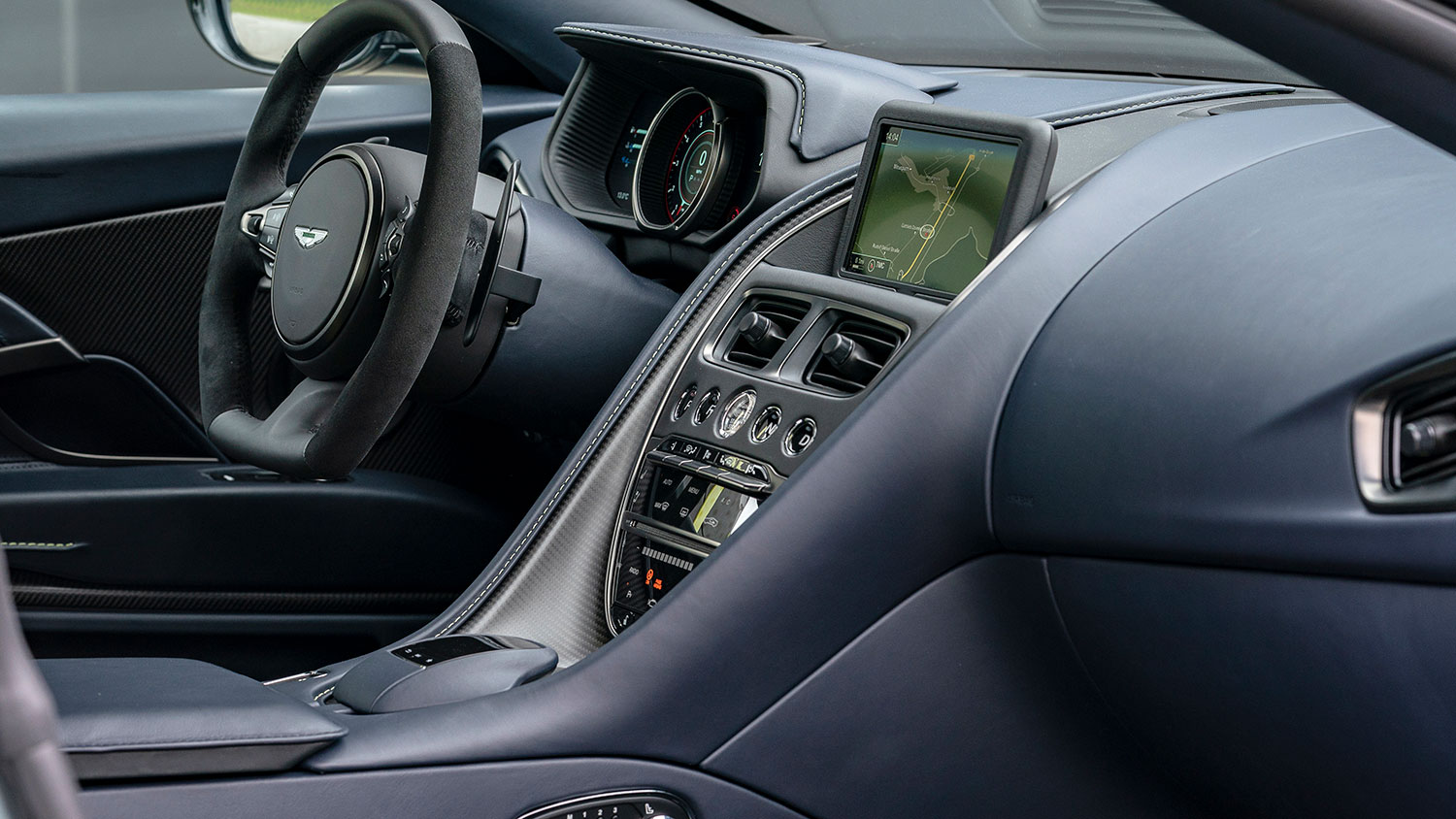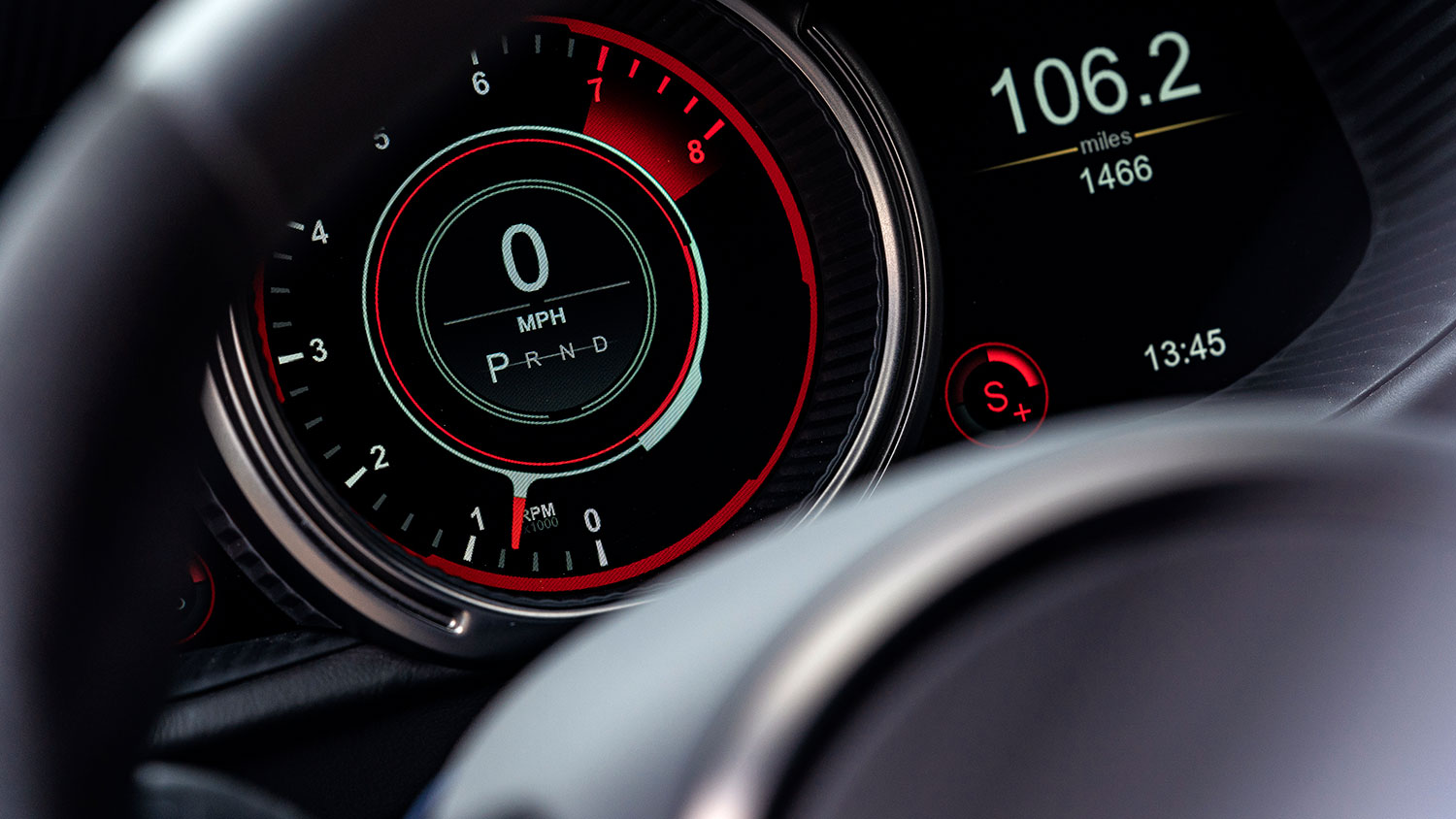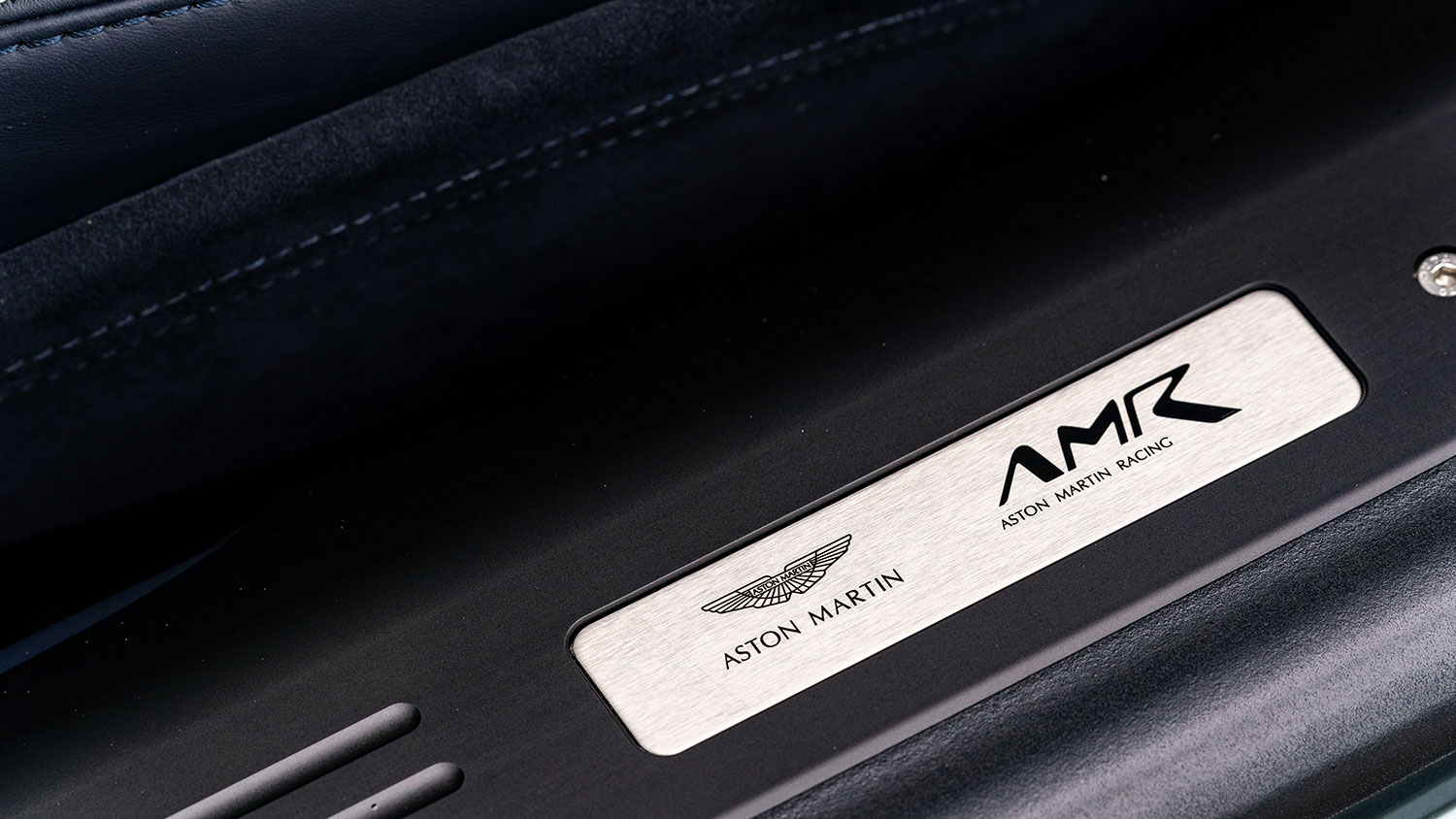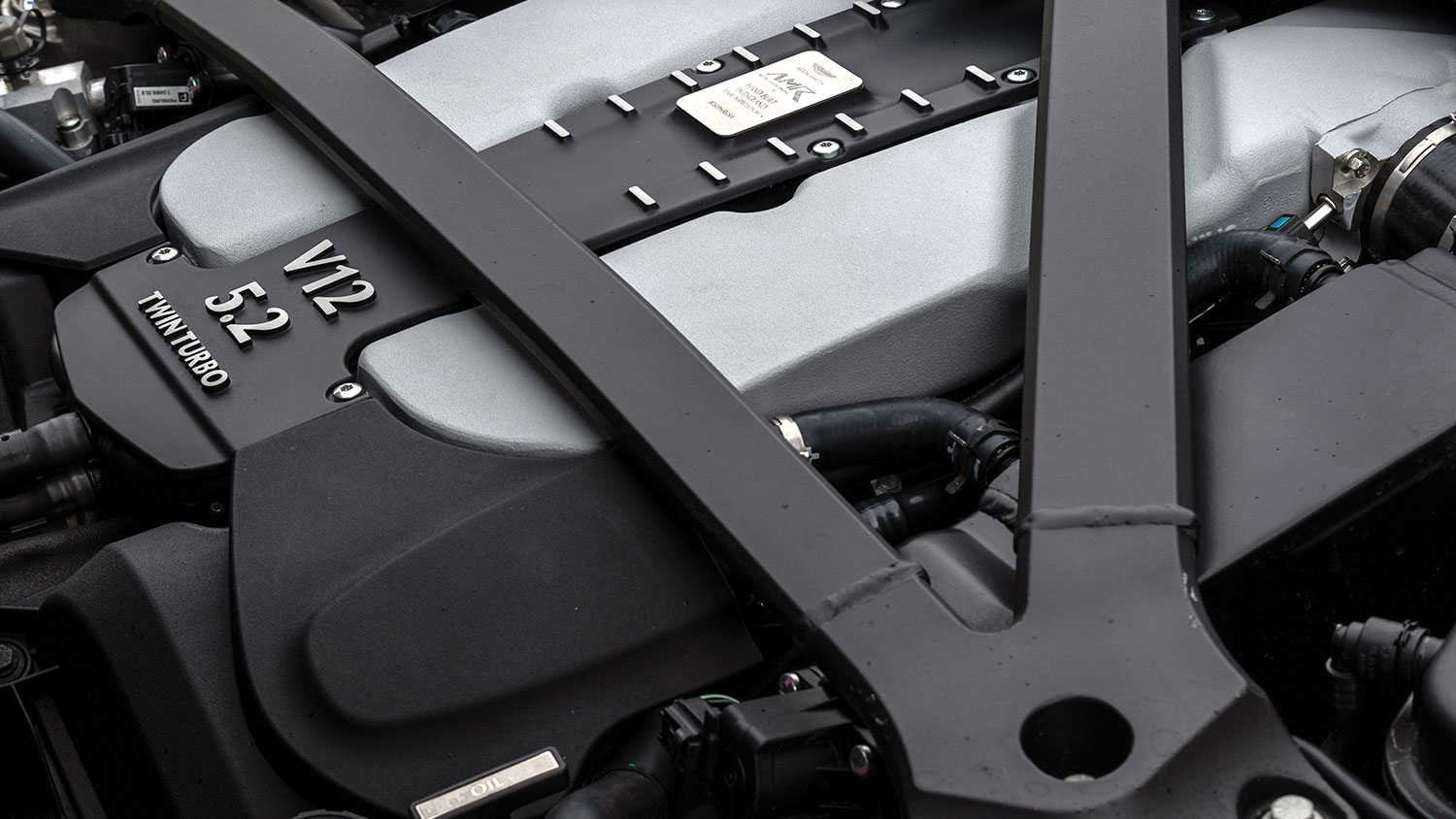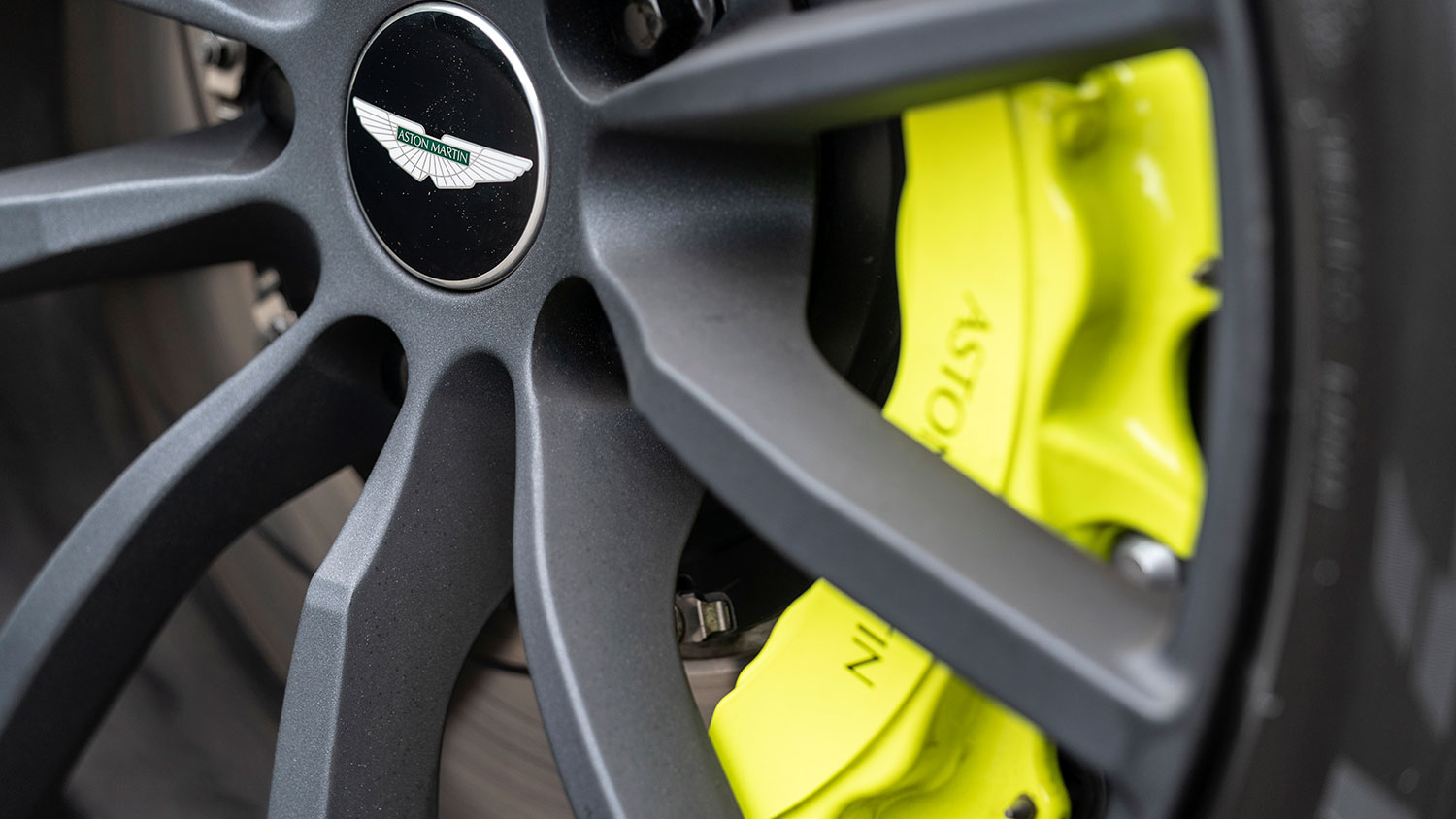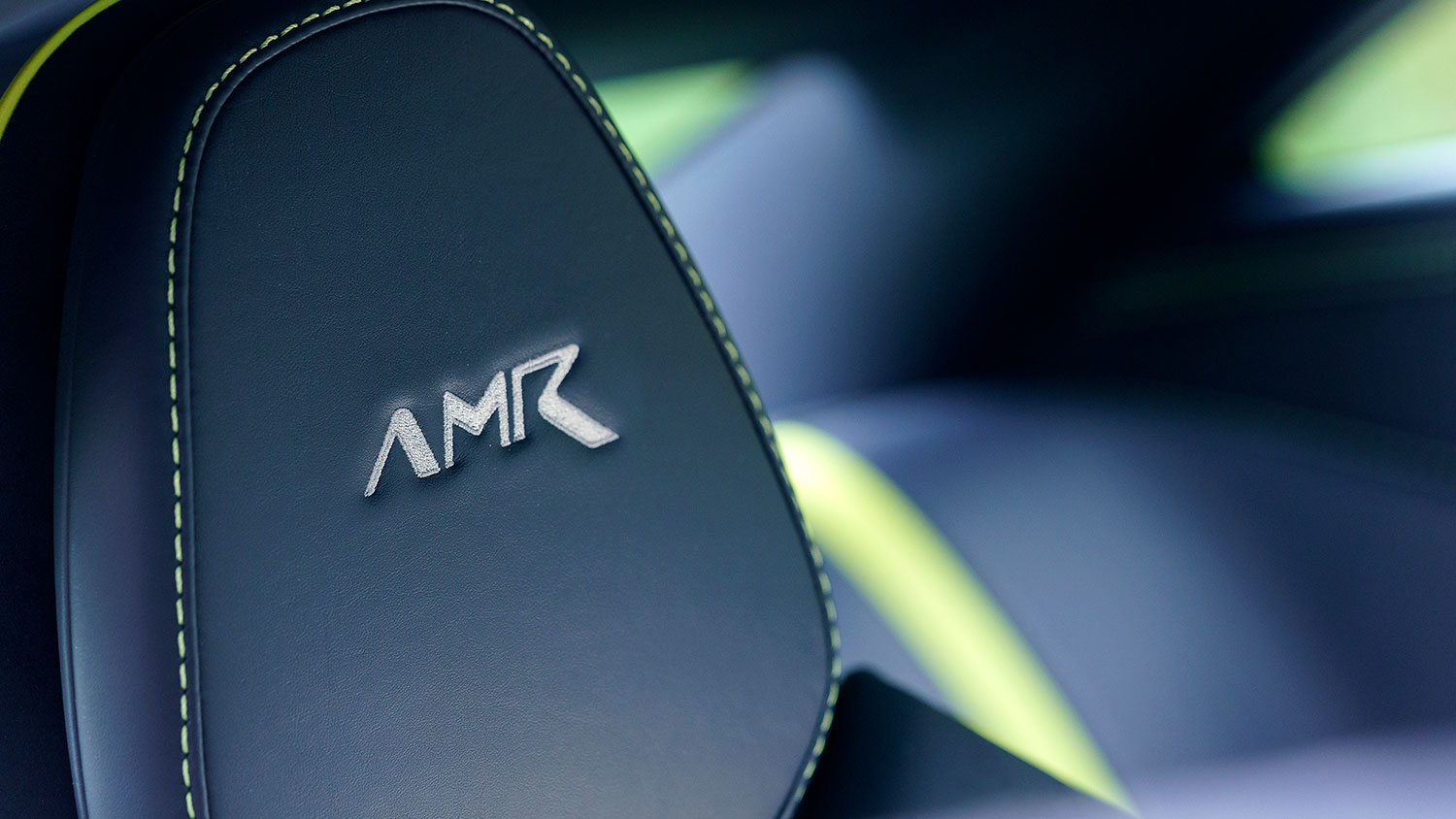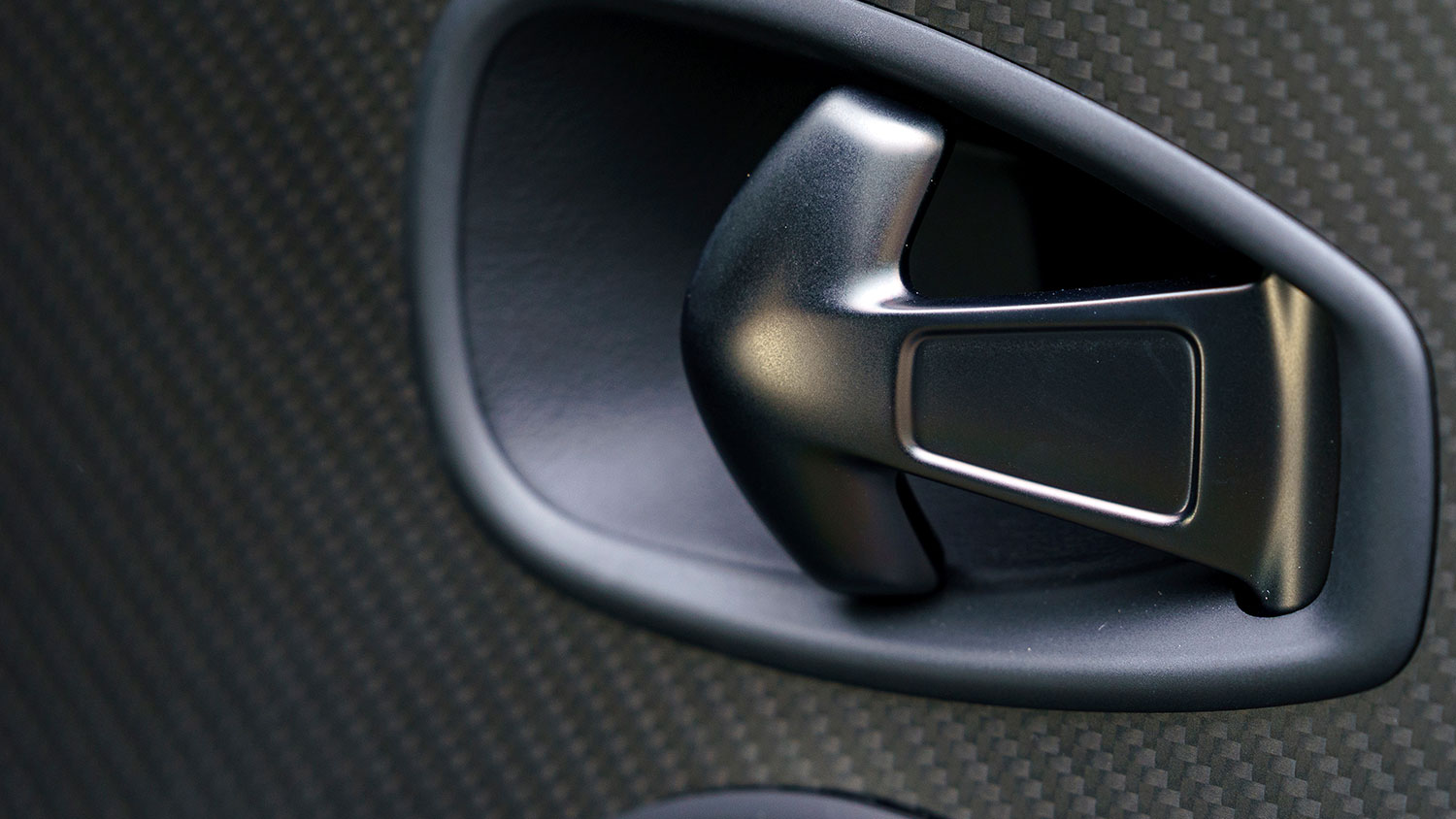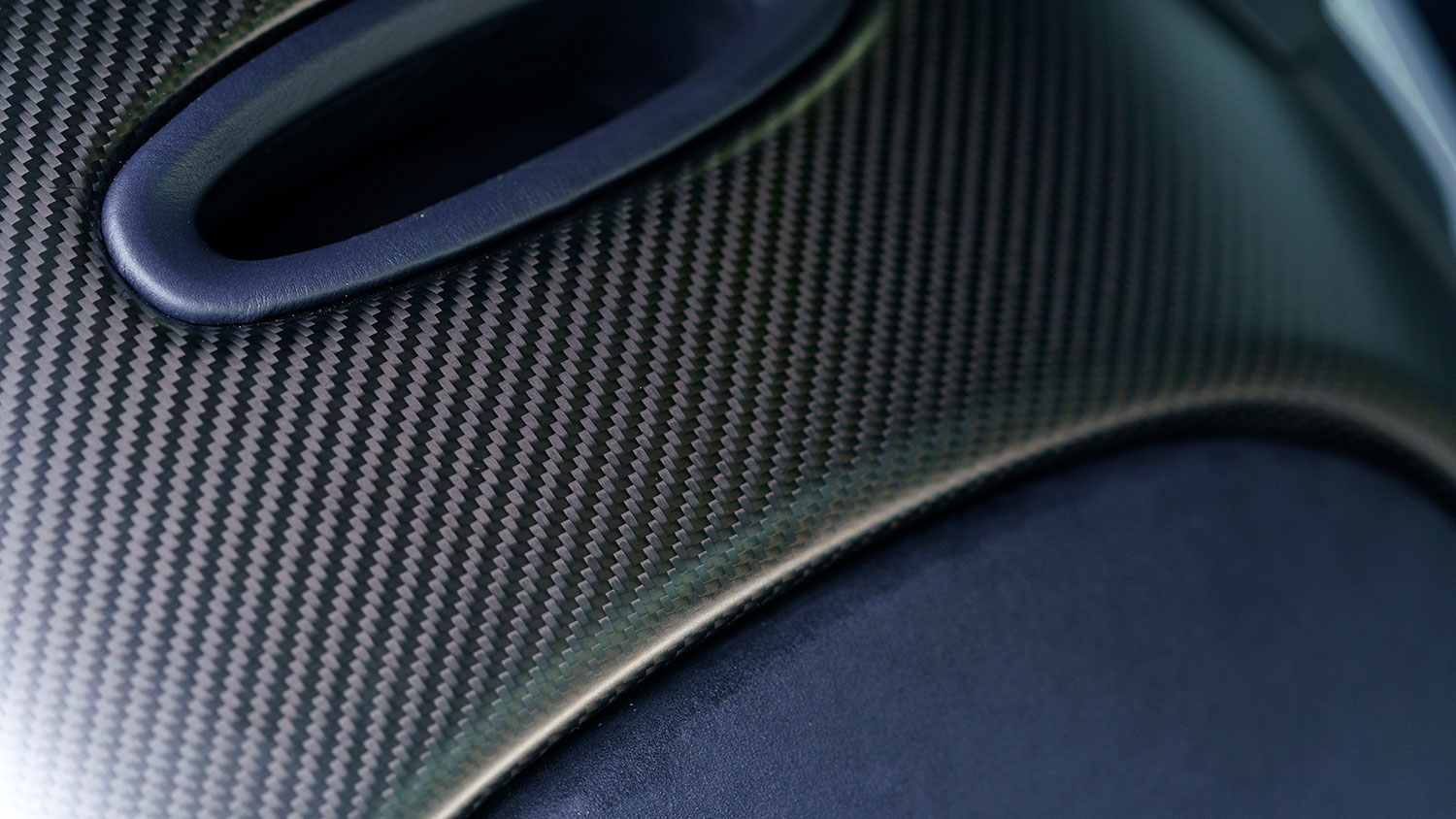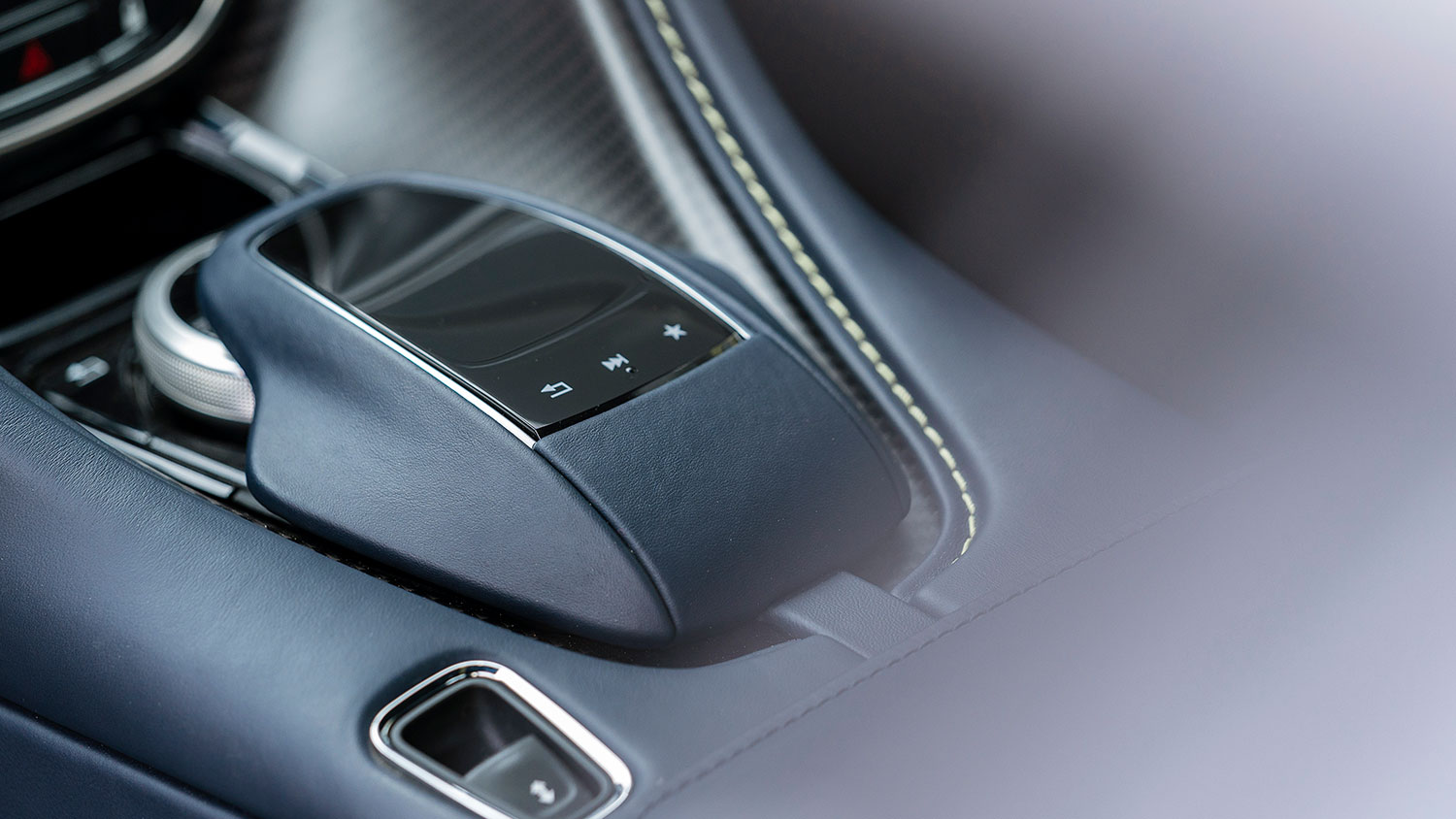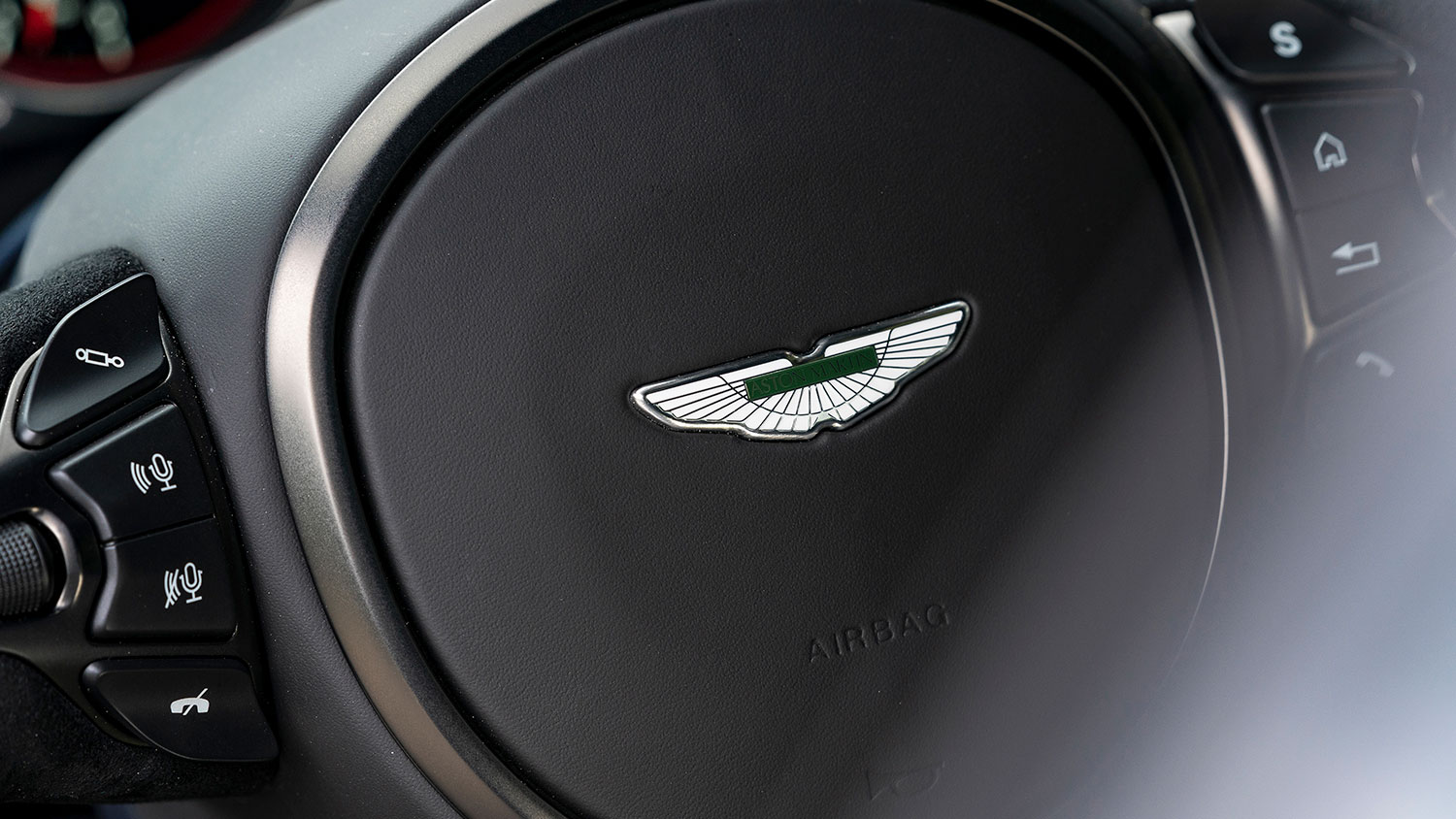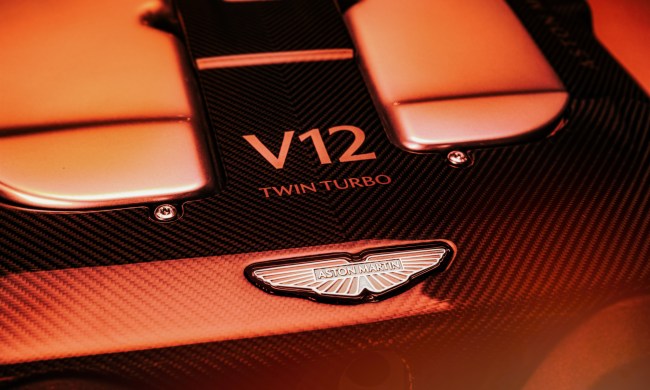The Green Hell is just 15 feet and a barrier away. It’s right damn there. Why am I not on the most infamous track in the entire world? Why bring me 5,000 miles, put me up in the hotel beside the Nurburgring, and tell me my trip won’t include time on the notorious racetrack? This is a tease of the highest order for someone with my automotive proclivities. I want to scream when I first hear my route is “road only.” Yet, after a handful of miles behind the wheel of the new 2019 Aston Martin DB11 AMR watching the sunny pastures effortlessly pass by and turn to medieval castles and impenetrable pine forests, I forget the nearly century-old racing surface and become one with the grand tourer.
What’s truly wild isn’t the DB11 AMR’s speed or noise or ability to make me forget about a bucket list item, but rather just how compliant the DB11 AMR is over the gently undulating German roads. As my co-driver found out, the smoothness can easily lull you to sleep even when bombing across the countryside at extra-legal speeds. In Grand Tour mode, the Aston Martin wafts across countries, seemingly beating private jets in terms of comfort, speed, and exclusivity. At least that’s how it feels when behind the wheel. It is even more impressive that Aston Martin was able to keep the DB11 AMR’s suppleness, due to the fact that the company’s engineers re-tuned much of the chassis and suspension in order to make it handle better.

When first launched, the DB11 was truly a great Grand Tourer. It did everything a Grand Tourer needs to do. However, though it very much is a GT, many still wanted it to handle like its sports car looks would have you believe it should. In the past, it didn’t, and would push toward understeer when you start hustling the big two-door, followed by a wild oversteer. It wasn’t balanced. Then Aston Martin launched the Mercedes-AMG V-8-powered DB11, which not only sounded more guttural than the V-12, but finally handled as everyone had wanted thanks to the four-cylinder diet. To satiate those that wanted better handling and a V-12, new to the DB11 AMR are lighter forged wheels, changed dampening, solid rear subframe mounts, and a wider and stiffer front sway bar all done to decrease the DB11’s handling issues.
But did it work?
Oh yeah, totally.
The DB11 and DB11 AMR are night and day in the handling department. Pushing into the granite mountains that surround the Nordschleife, the roads became increasingly tight with near 180-degree corners climbing toward the clouds. With my right foot leveling the accelerator and my left foot covering the brake connected to the massive carbon ceramic rotors, the DB11 AMR came into its own. I selected the car’s Sport Plus mode, sharpening up the steering, stiffening the suspension, and adding fuel to the fire inside the 5.2-liter monster lurking beneath the sensually designed hood.
I lay into the throttle at the apex of a tight forest bend and am greeted by the AMR’s new soundtrack of howls and pops. Aston Martin re-tuned the exhaust system to give the DB11 louder vocals after both customers and writers alike complained that the twin turbochargers muffled the hellacious 5.2-liter, V-12 underneath the clam-shell bonnet. In fact, I was one of those who had complained. When launched, the DB11 just didn’t have the same personality as Astons of yesteryear as a result of the quieter throttle response. Aston V-12s used to send chills down your spine. The DB11 just didn’t. But that character has returned with the AMR. Aston’s engineers went wild and brought noise and machine-gun fire back to the DB series.

One change that isn’t immediately noticeable is the Aston’s bump in horsepower. From Gaydon, the standard DB11 is rated for 600 horsepower. The DB11 AMR is now good for 630, which isn’t that significant in the grand scheme of the current horsepower wars being waged. It does, however, mean that it gets new performance metrics that’ll make Aston Martin customers quite happy. Sixty mph from a standstill now takes just 3.5 seconds, while max is an Autobahn-shaming 208 mph. However, according to Aston Martin’s chief engineer Matt Becker, the V-12 can make quite a bit more if given the chance. We will get that chance when the DBS Superleggera drops later this year.
From the seat of my pants though, the DB11 AMR doesn’t feel all that more quick or powerful than the standard V-12. It most definitely still pushes you back into the Brogue leather seats, which now feature Alcantara inserts. Indeed, it will cross continents like an intercontinental ballistic missile; but so did the standard DB11. It’s just not enough of a bump to truly feel the difference in power.
What hasn’t been changed, at least not drastically, is the DB11’s perfectly sculpted exterior lines. This grand tourer drips sex appeal. When everyone else is looking like carbon copies in their Porsches, the person who shows up in a DB11 drops the mic. In AMR guise, the only things Aston Martin’s engineers changed is the car’s brightwork. Gone are the chrome and metallic accents; in their place are darkened and black pieces for a more sinister and purposeful vibe.Overall, the DB11 AMR looks racier than before, and you’ll be waiting to catch your reflection in a shop window whenever you go into town.

Back in the AMR, I’m barreling down an unrestricted section of the Autobahn. The grand tourer is rock solid. No wiggles, shimmies, shakes, or anything that would cause me to lift my lead foot off the pedal. I silently wish my destination wasn’t some local picturesque coffee spot in some quaint German town just a stone’s throw from my start point near the ‘Ring. I want countries and continents ahead of me, not a handful of miles. I want hours inside its leather-lined cockpit, jamming to classic rock, downshifting through tunnels, and only stopping to sip espresso after my trip is done high above the Alps. I need more time — and if I had $241,000, I could have that time. But if I had that kind of cash, would I have the DB11 AMR?
There are a lot of cars you could buy with near enough $250,000. There are especially some really great grand tourers in that price range, including the Lexus LC500, Mercedes-Benz’s AMG GT, and even Aston Martin’s own DB11 V-8. Hell, for the price of the DB11 AMR, you could conceivably have two of the three.
Yet, the Aston Martin DB11 AMR delivers a resonance that, even combined, none of those cars could hope to touch. It can be quiet and supple, loud and sharp, or some combination of the two whenever asked. While my financial adviser likely wouldn’t recommend taking out a home loan to snag a set of keys, I can’t help but believe it would be totally worth the inevitable bankruptcy. This is a world-class automobile that keeps the grand touring crown at Aston Martin. As for the Nurburgring passing alongside me as I return to Aston Martin’s technical center, I’ll be back with something sharper, louder, and hopefully with a cage. Maybe Aston Martin Vantage GT3? Next time, Nurburgring, next time.
